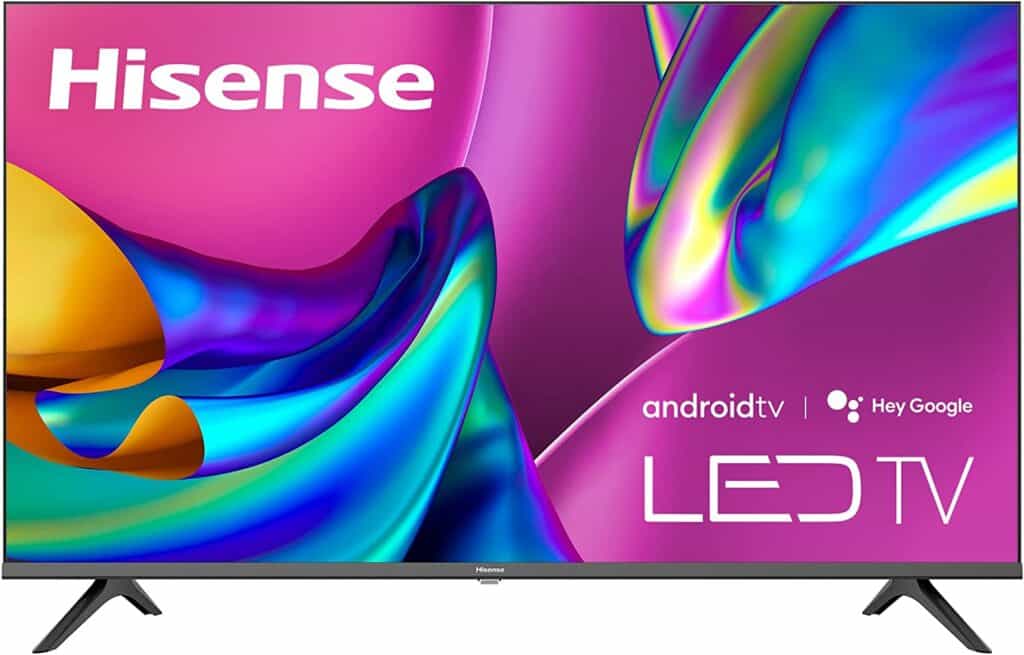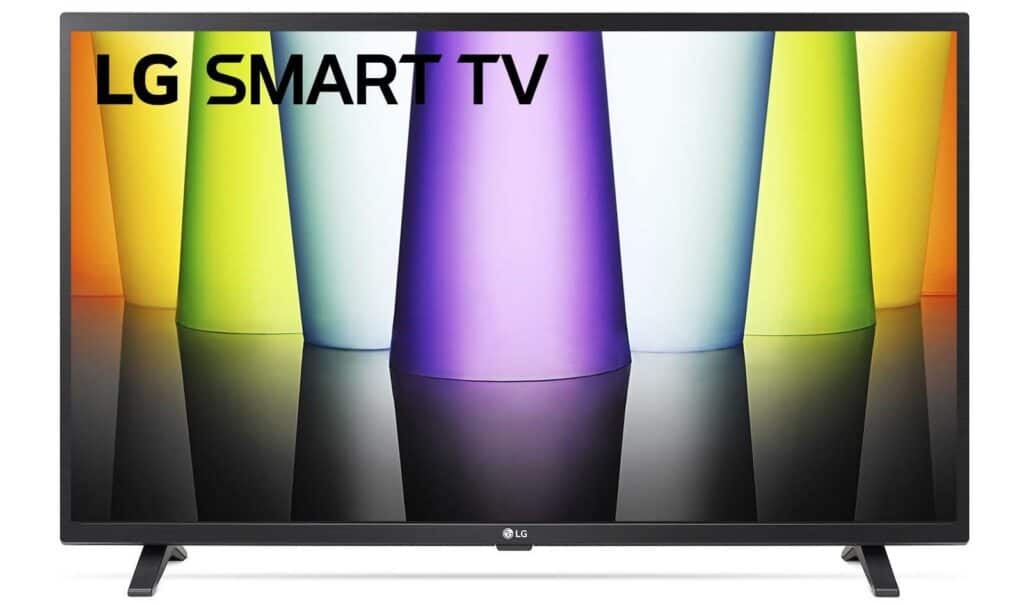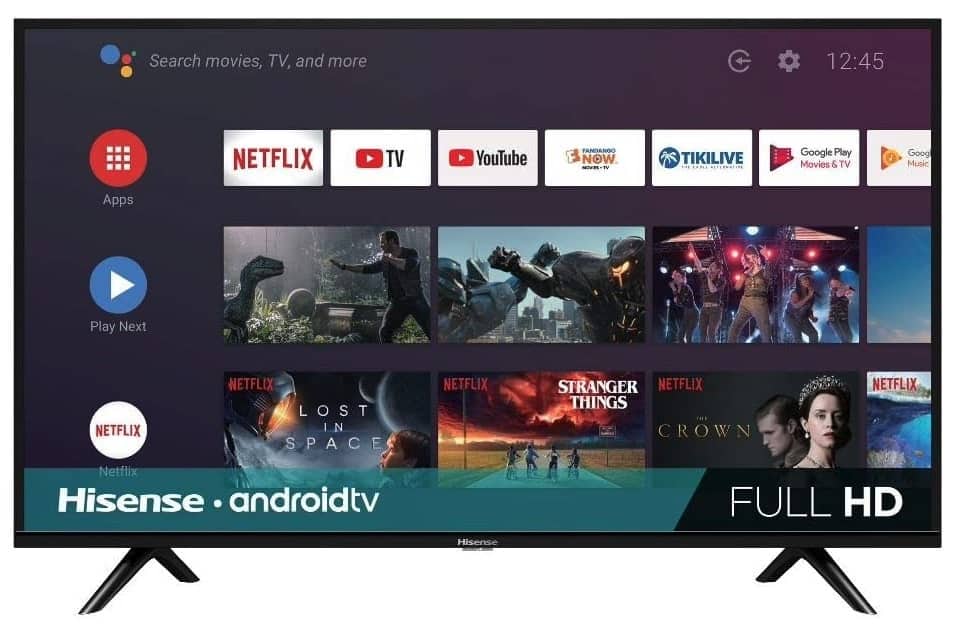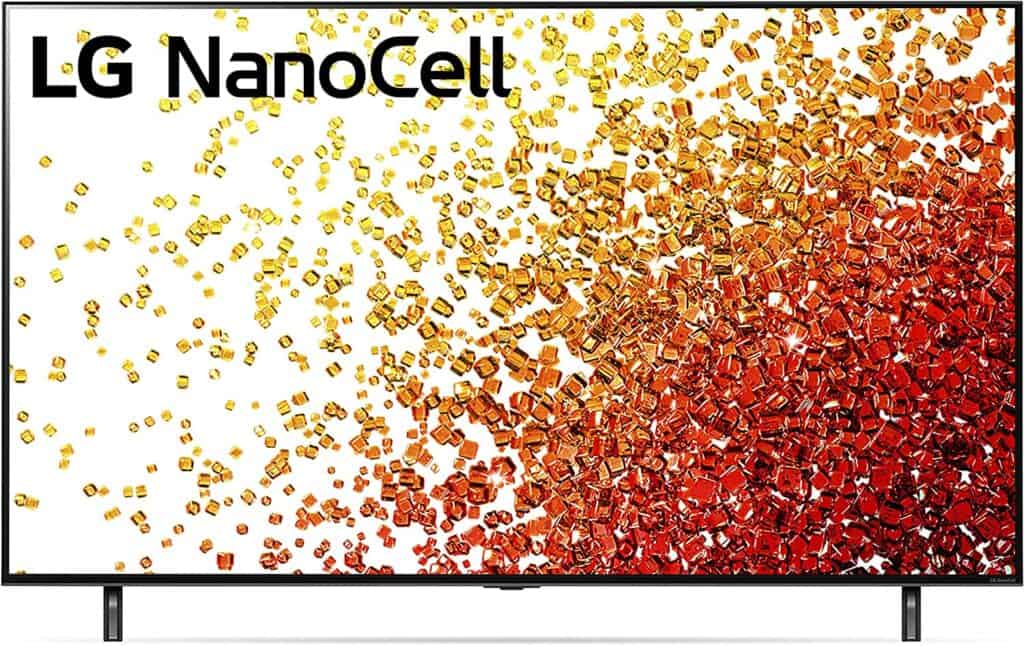What is more important to you when buying a new TV? Having a big brand name or getting a good deal?
In this article, we’ll compare the best representatives of both — Hisense vs LG — and see which TV brand is better.
LG vs hisense quick comparison
Both the brands in this LG vs Hisense comparison are from the Far East. Hisense is from China and LG from South Korea.
Hisense

Hisense made its start as a radio manufacturer in Qingdao in the late 60s, but seeing that more and more Chinese people were buying TVs for their homes, the company quickly realized the opportunity and started producing TVs.
As a result, Hisense became the number one TV manufacturer in China over the years and today, it holds a 21 percent TV market share in the country, ahead of Xiaomi and TCL.
LG

In comparison, LG had only a 0.3 percent market share in China, but the South Korean conglomerate can boast an 11.75 percent global market share and is tied second with TCL behind the global leader Samsung at 19.6 percent.
Features face to face
Panel Technology
Hisense offers TVs with a variety of panel types, including OLED, QLED and LCD.
Most of its budget TVs, such as the A4 series, are LCD, while QLED and OLED cover their mid-tier and top-end models like the Premium 55U6GR QLED Series.
In comparison, LG only covers LCD and OLED displays. However, LG is famous for its OLED panel technology, which is made from a series of organic films between two conductors and delivers top-notch picture quality.
Winner: Hisense
Image Processor
Hisense uses quad-core processors in most of its TVs with 4K upscaling and the ability to decode most video formats. However, last year, the TV manufacturer revealed its 8K processor.
Despite this, LG has the edge when it comes to image processing power thanks to its α- intelligent processor with an AI-powered deep learning algorithm.
Winner: LG
Motion Technology
While Hisense can compete with more expensive manufacturers like Samsung (see our Hisense vs Samsung TV comparison), LG is unparalleled here, with near-instantaneous response times and a full pixel transition of just over 1 ms.
Winner: LG
Picture Quality
Contrast Ratio / Black Level
Here again, Hisense is easily on par with most bigger brands, especially for its premium H8G and H9G 4K ULED models.
However, LG models offer an infinite contrast ratio as its OLED TVs can achieve black levels of 0 nits, resulting in an infinite difference between the brightest and darkest points on the screen.
Winner: LG
Local Dimming
Local dimming support largely depends on the TV model you’re looking at. For instance, many Hisense models have local dimming features, but not all.
On the other hand, LG’s OLED TVs don’t support local dimming but can turn off individual pixels and display bright objects perfectly on-screen.
Winner: Draw
Peak Brightness
Once again, Hisense can put more well-known brands to shame with excellent peak brightness, at least on similarly priced models. Of course, this largely depends on the specific model — for instance, the U8G has a peak brightness of 1,000 nits.
In comparison, peak brightness isn’t LG’s biggest draw, with their TVs generally not getting that bright, as you can see in our LG vs TCL comparison where we put two similarly-priced models, LG B9 and TCL 6 Series, head-to-head.
Below is a table comparing two competitively-priced Hisense and LG models. Note that “peak” brightness represents the maximum luminance of a white square for a short time, while “sustained” brightness is the maximum luminance over a longer period.
| Peak Brightness | Hisense U8G | LG C1 |
|---|---|---|
| SDR Real Scene Peak Brightness | 562 nits | 302 nits |
| SDR 2% Window Peak Brightness | 954 nits | 412 nits |
| SDR 100% Sustained Window | 613 nits | 131 nits |
| HDR Real Scene Peak Brightness | Around 1,000 nits | Around 700 nits |
| HDR 2% Window Peak Brightness | 1,012 nits | 751 nits |
| HDR 100% Sustained Window | 701 nits | 125 nits |
| Price | Check Price on Amazon | Check Price on Amazon |
Winner: Hisense
Color
Both brands provide a wide color coverage, however, we have to give this one to LG here as its TVs are generally capable of producing richer colors and a wider color gamut.
Winner: LG
Viewing Angles
If you’re looking for a TV for a wide-seating arrangement, you can generally skip Hisense as it has relatively poor viewing angles.
On the other hand, LG has some of the best viewing angles out there and its image remains accurate even if you sit off-center, making it ideal for watching sports or movies with a bunch of friends in a room.
Winner: LG
Reflections / Anti-Glare
Most Hisense models come with a semi-gloss screen finish, which isn’t the best at handling reflections and glare, and a full-gloss screen finish (only some models have full-gloss).
In comparison, most LG models have a full-gloss finish that reflects only around 1.5 percent of total light.
Winner: LG
Sound Quality
In general, audio quality isn’t the top selling point of most TV manufacturers, and while both Hisense and LG generally have good sound, depending on the model, of course, with solid bass, getting a TV soundbar is generally a good idea in both cases.
Winner: Draw
Smart TV Platform (Operating System)
Hisense goes with Android TV for its smart TVs, while LG uses the in-house WebOS operating system. In general, WebOS is smoother and more user-friendly.
Let’s see them one-on-one in the next table:
| OS Features | Hisense TV | LG TV |
|---|---|---|
| OS Version | Android TV | WebOS |
| App Selection/Variety | 8/10 | 8/10 |
| App Smoothness | 6/10 | 9/10 |
| Ease of Use | 6/10 | 8/10 |
| Interface Layout | 7/10 | 7/10 |
Winner: LG
Connectivity
Inputs
The number and specifications of input ports usually vary between different TV models, even in the same TV brand.
Here again, we compared two models in a similar price range that LG vs Hisense offer and here are the results:
| Input Ports | Hisense U8G | LG C1 |
|---|---|---|
| HDMI Ports | 4 | 4 |
| USB Ports | 2 | 3 |
| Digital Optical Audio Out | 1 | 1 |
| 3.5 mm Analog Audio Out | 1 | 1 |
| Ethernet | 1 | 1 |
All that said, both Hisense and LG models we compared here have a very low input lag with LG C1 generally performing a little better as you can see in this table:
| Input Lag | Hisense U8G | LG C1 |
|---|---|---|
| 1080p@60Hz | 15.2 ms | 10.1 ms |
| 1080p@120Hz | 5.9 ms | 5.2 ms |
| 1440p@60Hz | 15.1 ms | 10.1 ms |
| 1440p@120Hz | 5.9 ms | 5.3 ms |
| 4K@60Hz | 15.2 ms | 10.1 ms |
| 4K@120Hz | 5.8 ms | 5.6 ms |
Winner: LG
Voice Assistants
As most Hisense TVs use the Android TV operating system, they’re also equipped with Google Assistant VA, but several models also support Amazon’s Alexa voice assistant.
LG, on the other hand, also uses Google Assistant but has its own ThinQ AI VA as well.
Winner: Draw
Wireless Technologies
Both Hisense and LG TVs offer 2.4 GHz and 5 GHz WiFi standards, while the mid-range and high-end models also allow you to pair your TV with speakers, headphones and other devices via Bluetooth.
Winner: Draw
Standout Features
When it comes to standout features like VRR (Variable Refresh Rate), FreeSync, G-SYNC, etc., you’ll only find them in premium Hisense models like the H8G.
However, most LG smart TVs have these features.
Winner: LG
Price
If you’re buying on a budget, Hisense TVs are typically a good, all-around option, whereas LG models are generally in a higher price bracket.
For instance, a 75-inch Hisense will cost you between $500 and $1400, while the same-sized LG TV can go above $2,500.
Here are some Hisense and LG TVs you can buy on Amazon:
Hisense

- Hisense 40-inch H55 Series – Check Price on Amazon
- Hisense 43-inch R6090G – Check Price on Amazon
LG

- LG 55-inch NanoCell – Check Price on Amazon
- LG 32-inch LED HD TV – Check Price on Amazon
Conclusion
If you compare Hisense vs LG feature-for-feature, then LG wins in most parameters. Still, with Hisense generally being more affordable and also having a better peak brightness, the Chinese TV brand is not to be dismissed either.
In the end, however, if you can afford it, we’d recommend LG.